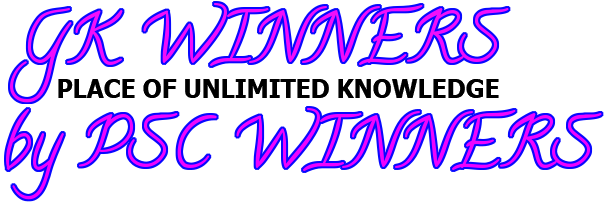PEDAGOGY - CHILD PSYCHOLOGY - 2
26. Peer pressure is
(a) Always negative
27. Which of the tasks that teens are dealing with?
(a) Overcoming Identity Crisis
(b) Adjusting to new intellectual abilities
(c) Achieving new and more mature relations with age-mates of both sexes
(d) All of the above
Answer: (D)
28. As adolescence moves towards independence, wise teachers will
(a) Read the teen's email
(b) Impose firm control over the teens
(c) Give the teen the opportunity to make more choices and decisions and acts as a resource
(b) Means conforming to your friends
(c) Attempting to imitating others
(d) Has no effect on adults
Answer: (B)(a) Overcoming Identity Crisis
(b) Adjusting to new intellectual abilities
(c) Achieving new and more mature relations with age-mates of both sexes
(d) All of the above
Answer: (D)
(a) Read the teen's email
(b) Impose firm control over the teens
(c) Give the teen the opportunity to make more choices and decisions and acts as a resource
(d) Restrict the teen clothing styles and dress
Answer: (C)
29. Emotional fluctuations in adolescence are caused by:
(a) Hormonal changes and brain in development
(b) Hormonal imbalances
(c) Peer pressure
(d) Environmental factors
Answer: (A)
30. Friendships during the teen years:
(a) Are not to be encouraged
(b) Often become as or more important than being with family
(c) Are nice, but not necessary for teens social development
(d)Should be chosen by the teen's parents
Answer: (B)
31. Competent development during adolescence is promoted by all of the following except:
(a) Respect ofthe teens byparents,
(b) Taking responsibility for one's actions
(c) Parents showing an interest in the teen
(d) Perfect behavior expected by parents
Answer: (D)
32.Ivan Pavlov is important in psychology because he
(a) discovered the principles of classical conditioning.
(b) discovered the principles of operant conditioning.
(c)was the first to understand the implications of unconscious
on human personality
(d) was the first who discovered the importance of perception
Answer: (A)
Answer: (A)
33. A projective test or technique is a method of collecting data about an individual's personality through :
(a) A short structured interview schedule.
(b) Direct observations of individual's behaviour
(c) unstructured stimulus situations such as ink/blot, photographs, etc., to elicit individual's reactions.
(d) Participant observations for measuring an individual's personality qualities . .
Answer: (C)
34. Psychology deals with human
(a) Feelings op (b) Thoughts
(c) Behaviour (d) All of the above
Answer: (D)
35. Which is a projective test?
(a) Edwards personal Preference Schedule (EPPS).
(b) Allport Vernon-Lindzey A Study of Values
(c) Roschach Test
(d) Minnesotta Multiphasic Personality Inventory (MMPI).
Answer: (C)
36. A question, a frown or from a friend is
(a) Stimulus (b) Reaction
(C) Action (d) Response
Answer: (A)
37. In deductive method teaching is done
(a) From general to specific (b) From macro to micro
(c) From specific to general (d) From easy to difficult.
Answer: (B)
38.If a preserves both hungry and sleepy at the same time then arises:
(a) approach-avoidance conflict (b) approach-approach conflict
(c) avoidance-avoidance conflicts (d) none of these conflicts
Answer: (B)
39. In India, Elementary Education has become a------------
(a) Fundamental right (b) Onlyalegal right
(c) Only a directive principle. (d) None of the above
Answer: (A)
40. We usually avoid remembering something that is associated with fear or unpleasantness. In tradition language those avoidance is termed as
(a) Suppression (b) Repression
(c) Avoidance (d) Forgetting
Answer: (B)
41. Handwriting problems are known as which of the following?
(a) Dyslexia (b) Dyscalculia
(C) Dysgraphia (d)Dysphasia
Answer: (C)
42. Students with mathematical difficulties may experience which of the following?
(a) Procedural problems (b) Semantic memory problems
(c) Visual-spatial problems (d) All of these
Answer: (D)
43.Students with autism may have which of the following characteristics of communication?
(a) Lack of eye contact (b) focus attention on one topic only
(c) use limited gestures to supplement verbal skills
(d) All of the above
Answer: (D)
44. The process of expansion of an individual's capacities quantitatively, should be termed as:
(a) Development (b) Growth
(c) Equilibration (d) Maturation
Answer: (A)
45. The development that proceeds in the direction of the longitudinal axis i.e., head to foot is termed as
(a) Cephalo-caudal development (b) Proximo distal
(c) Interrelation (d) Intergration
Answer: (A)
46. The cardinal principles of learner centered education are.......
(a) Activity centeredness (b) Life centeredness
(c) Both (d) None ofthese
Answer: (C)
47.Who gives more stress to the philosophy of social constructivism?
(a) Piaget (b) Kohlberg
(c) Vygotsky (d) Dewey
Answer: (C)
48........... is the process of determining the extent to which an objective is achieved or the qualities envisaged.
(b) Evaluation (a) Measurement
(d) None of these (c) Both (a) and (b)
Answer: (B)
49. In which of the following stages the child looks self centered?
(a) Infancy (b) Early childhood
(c) Adolescence (d) Adulthood
Answer: (B)
50. Indeductive methodteaching is done
(a) From general to specific (b) From macroto micro
(c) From specific to general (d) From easy to difficult.
Answer: (A)






0 Comments